Chingford Hospital
Larkshall Road, Chingford, E4 6UN
Medical dates:
Medical character:
1901 - 1996
Infectious diseases, tuberculosis. Later, geriatric and young disabled, then Out-patients only
By 1893 the population of Walthamstow had greatly increased and, when Plaistow and Highgate Hospitals refused to take any more smallpox patients from the area, the need for a municipal isolation hospital became urgent. For this purpose Larkswood Lodge, with 20 acres, off Hale End Road (later renamed Larkshall Road) was bought by the Walthamstow Urban District Council for £2623.
The Walthamstow Sanatorium (or Isolation Hospital) opened in 1901, having cost £33,364 to build. The opening ceremony was held in one of the wards and a 'goodly number' turned up for it, creating a crowd problem.
The ground floor of the two-storey administration block contained offices, a sitting room and bedroom for the doctor, sitting rooms for Matron and the nurses, as well as dining rooms for the nurses and the servants. The kitchen, scullery, pantries and storerooms were also on this floor. On the first floor, as well as bathrooms, were bedrooms for Matron, 18 nurses and the servants. Gas was used for cooking and heating; indeed, the Hospital made its own gas (the cost of this was 2d (0.8p) per 1000 cubic ft compared with 7d (3p) for coal gas.
The ward accommodation consisted of three pavilions containing 14 beds each, as well as a nurse's room with kitchen and bathroom. There was also a small 4-bedded observation ward. A mortuary was discreetly hidden behind trees at the rear of the site.
The engine-house contained two 28 BHP gas engines of the Westinghouse type, which generated electricity for lighting and driving the laundry machines.
Patients arrived by horse-drawn ambulances and were admitted to the observation ward for assessment before being transferred to one of the main wards.
In 1904 an agreement was reached to admit diphtheria patients from Chingford.
The Hospital was enlarged in 1905, with additional bedroom and sitting room accommodation for six nurses and five maids in the administration block. A bacteriological laboratory and office were also built, as well as a 2-storey block for 24 convalescent patients, with a day room on the first floor. By this time the Hospital had 72 beds.
A pavilion for patients with tuberculosis (TB) opened in 1914. The new building was divided into six compartments, with two beds in each. At the west end there was a room for two acute patients, with bedrooms for the nurse and ward maid and, at the east end, a small kitchen and dining room.
In 1938 the Leyton Council bought a half-share in the Hospital and it became known as the Leyton and Walthamstow Joint Hospital.
At the beginning of WW2 a First Aid post with a Gas Cleansing Section was established at the Hospital. In 1940 and 1941 the Hospital was bombed, but little damage occurred.
In 1946 it was renamed the Walthamstow Infectious Diseases Hospital and Sanatorium.
In 1948 it joined the NHS, when it had 100 beds for patients with infectious diseases and 18 beds for those with TB. In the following year the war damage was repaired.
By 1953 the Hospital had ceased to deal solely with infectious diseases, becoming a general hospital providing postoperative (no surgery was performed here), medical and orthopaedic treatment. It was renamed Chingford Hospital.
In 1956 a new Out-Patients Department opened, at the cost of £24,000. Physiotherapy and Occupational Therapy Departments were added in 1958.
By 1970 Chingford Hospital had become a busy acute general hospital with 100 beds.
The closure of Connaught Hospital in 1977 was expected to affect the role of Chingford Hospital, making funds available for improvements and expansion. Plans were made to sell off five acres of land, while retaining the rest for a possible Health Centre. In 1978 the former TB ward was converted to a medical ward for female patients and renamed Larkshall Ward.
Throughout the 1980s there was much debate about the future of the Hospital, as to whether it should become a community hospital for the care and rehabilitation of local people (so there would be no need for the elderly to go to Langthorne Hospital), and a Health Clinic with family planning, a baby clinic, chiropody and occupational therapy. The terminally ill would be sent to Whipps Cross Hospital. At this time the Hospital had 58 beds for geriatric patients and 15 beds for younger disabled people.
The in-patients side closed in 1991 but the Out-Patients Department continued until 1996, when the Hospital finally closed.
Present status (April 2008) One of the Hospital buildings survives as the Silverthorn Medical Centre, owned by Whipps Cross Hospital. Most other buildings were demolished. The site also contains the Ainslie Rehabilitation Unit for physiotherapy and transitional care and Highams Court, with 17 beds for continuing care of the elderly. Highams Court was built first. It was opened officially in 1994 by the former MP for Chingford, Lord Tebbit, accompanied by Lady Tebbit. A garden was created on the remainder of the site in 2001. A consortium of four Housing Associations bought the remainder of the Hospital site to build 120 family homes, the sale of the land contributing to the building of the new health care centres on the site. |
|---|
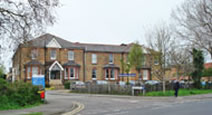

The Silverthorn Medical Centre.
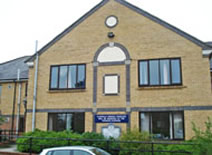
The newly built Ainslie Rehabilitation Unit.
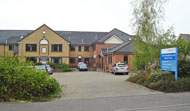
The Ainslie Rehabilitation Unit and Highams Court.
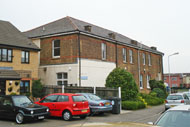
The Child Health Clinic is in the old administration building.
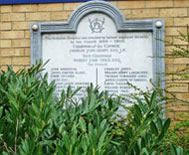
The 1899 cornerstone for the isolation hospital is mounted on the front of the Ainslie Rehabilitation Unit.
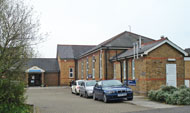
One of the former ward buildings, now part of the Ainslie Rehabilitation Unit.
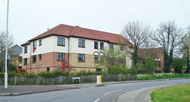
New housing.
References
Davis L 1998 Chingford Hospital. A Hundred Year Story of Our Hospital. Chingford Historical Society.
http://hansard.millbanksystems.com
www.bbc.co.uk
www.british-history.ac.uk
www.chingfordhistory.org.uk